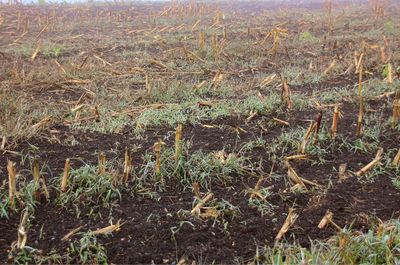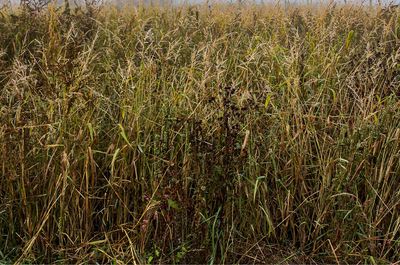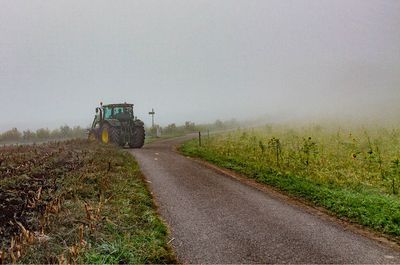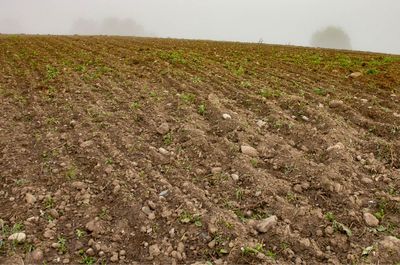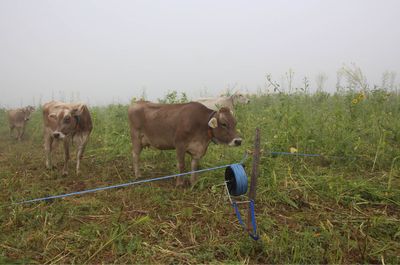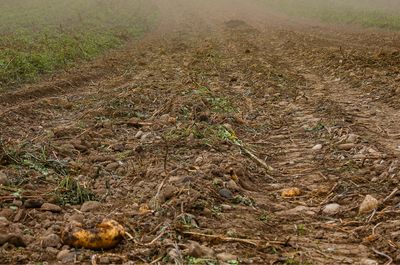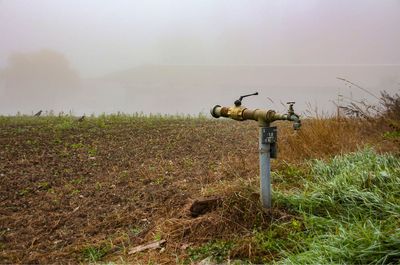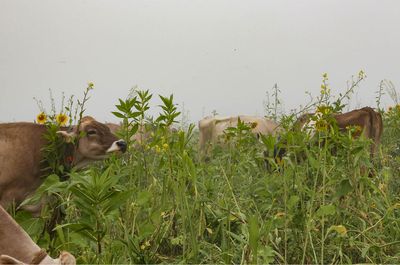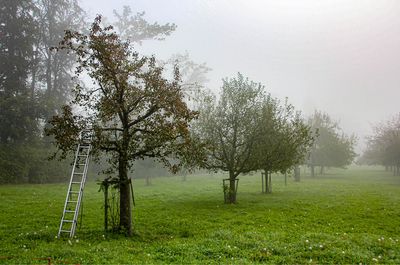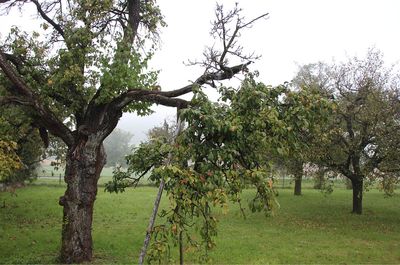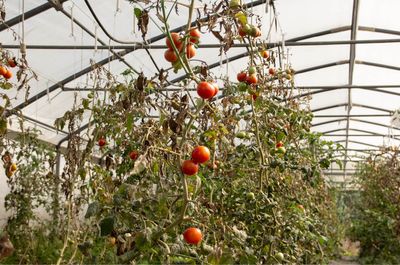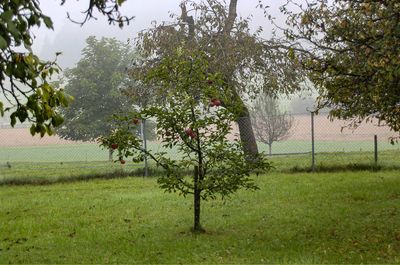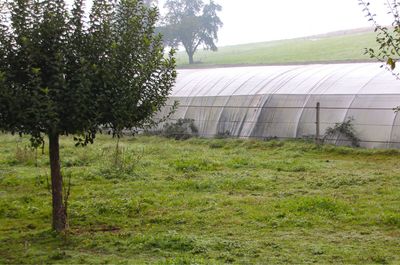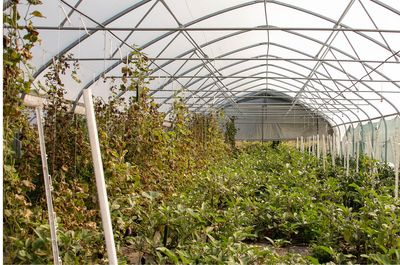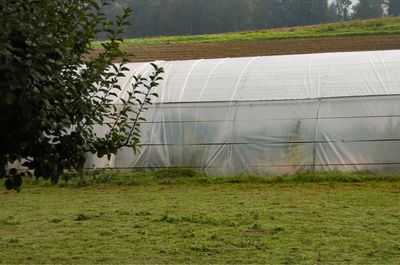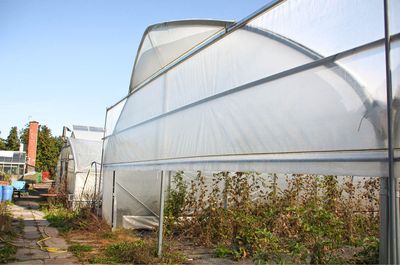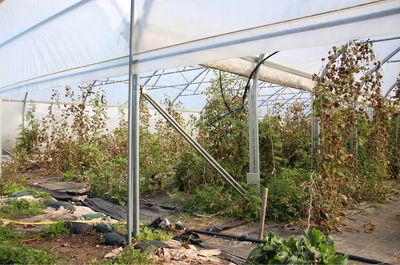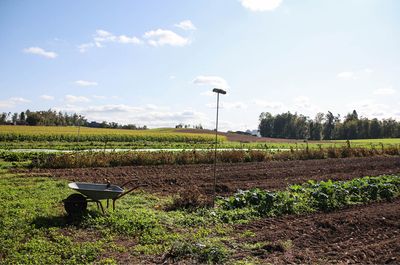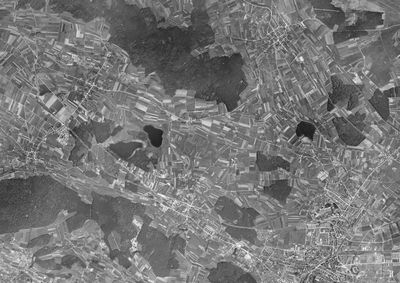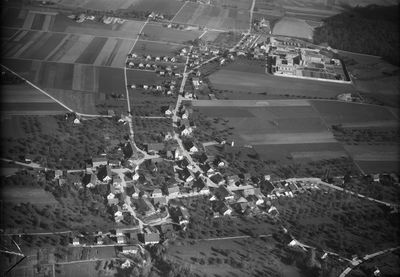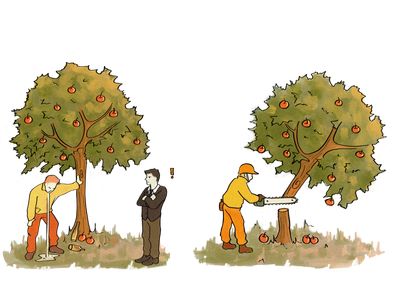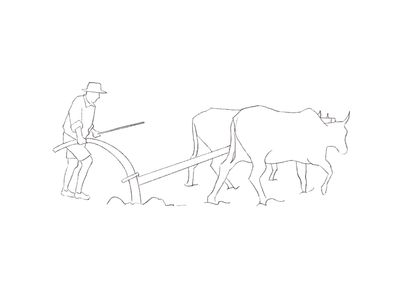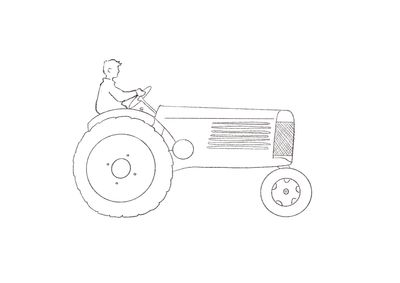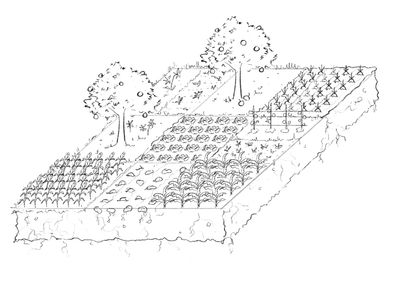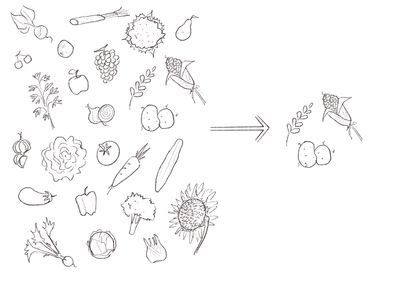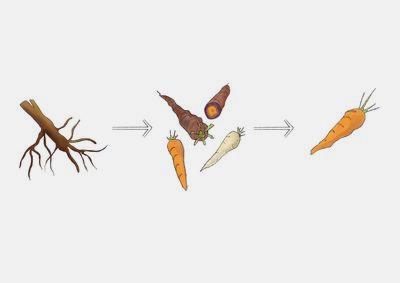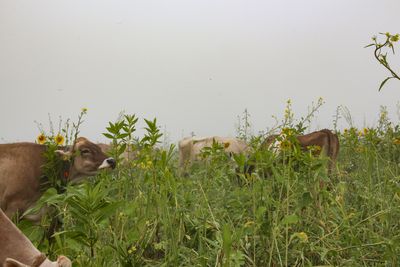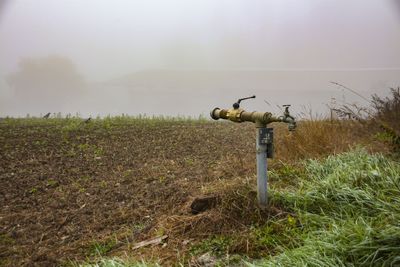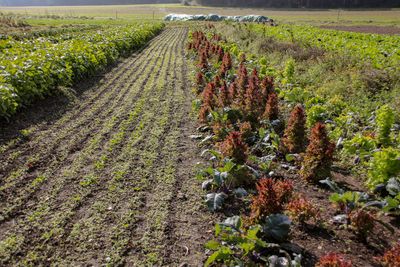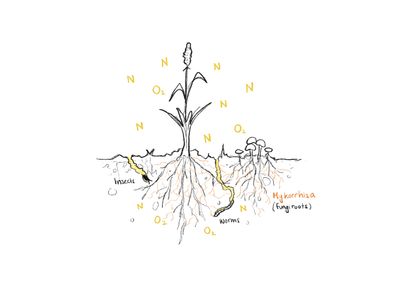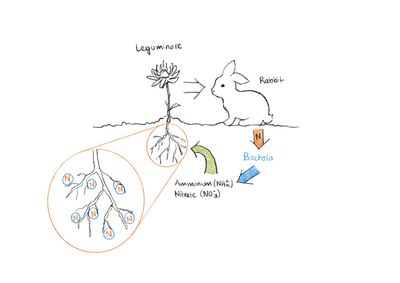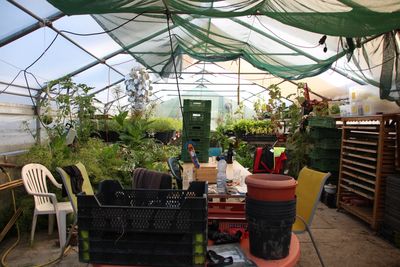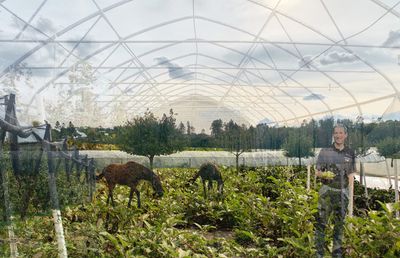AtlasCrop CultivationJosias Regli, Ketsia Wild, Anaelle Le Mintier de Léhélec, and Angela Thomas
For a long time, crop and soil have fostered each other in order to feed us. But the current situation in Zürich Nord shows us a different picture where the good earth, suitable for crops, is mostly used for pastures or to feed cows. Moreover the soil quality has decreased because of over fertilisation leading to soil deterioration. Our generation has to care for earth again, as a fundament for every living being.
Towards a Simpler Agriculture Practice
Comparing the satellite image from 2022 with with one from 1946 taken shortly after the end of the Second World War, drastic transformations of the agricultural territory become apparent such as the change in field size: over the decades, individual small plots have been merged, and now form large fields.
Another visible change is the disappearance of orchards. Between 1950 and 1975, 11 million fruit trees were cut in Switzerland, as part of the state-organized action famously called “Baummord”, in order to solve the problem of alcohol addiction among the rural population.
In the past 70 years, the proficiency of farming saw its biggest development ever since. Whereas before the war, almost every labor (like for example plowing the soil) had to be done by hand. Nowadays, there is at least one dedicated machine for each job.
These heavy machinery and excessive tillage lead to soil compaction, a main issue that reduces the soil’s interstitial space and increases its density, limiting the absorption of water and nutrients and hindering root growth.
However, this progress has come at a cost— there is fewer people who work in agriculture and a decline in the number of farms. There is also rise of overall farm size, some now topping over the 100 ha mark. In 2021, farms had an average agricultural area of 21 ha. That is more than twice as much as in 1975. On our site in Zürich Nord, there are now only 18 farms left.
Today’s farming practice also sees the rotation of only a few main crops. These crops are corn, wheat, potatoes, oat, barley, rapeseed and sunflowers. Also, within each crop species, only a few staple species are now cultivated, which often are not even endemic to our region, endangering the survival of our domestic variety of crops.
What Is Actually Being Grown?
Most land of the site nowadays is used for dairy farming and beef industry, where pastures occupy almost half of the arable area at our site.

Agricultural land use
- vines
- fruit
- other
- potatoes
- vegetables
- oil plants
- corn
- grains
- pastures
- forest
- water
- organic farming
Grains like wheat or oat possess 27% of the land. Corn, also a grain for the cattle industry, covers 11%. Next are plants for oil production like rapeseed, then, vegetables, potatoes, fruits and lastly, vineyards which only take 0.6% of the arable area. Generally, grain and vegetable fields are found in the plains around the cat lakes whereas meadows, vineyards and orchards are situated at the south facing slopes.
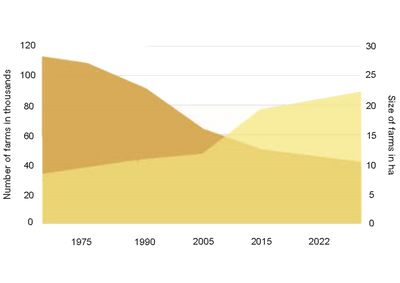
Organic Farms in Zurich from 1975 to 2022
- percentage of farms
- percentage of organic farms
Two out of 18 farmers produce organically, both of them being leaseholders of the city of Zurich. This ratio stands under average with the ratio of the canton of Zurich, where 16% of all farms are organic.
Unraveling the Site
The site has a variety of very local conditions, ranging from the forested north-facing slopes of the Hungerberg to marshy terrain around the cat lakes with its adjacent arable plains; and further to the gentle sun-kissed slopes rising to the forested hilltops of the Michelholz.
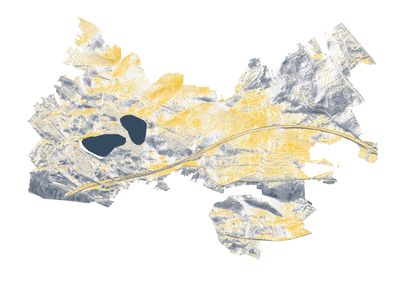
Sun Exposure
Source: GIS-based elaboration by Leonie Ismene Ehrler, Paulo Olivato, Serena Neuenschwander, and Livie Weidkuhn, 2023
Looking at sun exposure, the slopes are predominately south oriented and receive a good amount of sun days, enabling even the cultivation of vines.
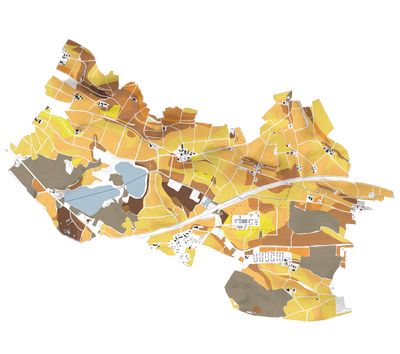
Agriculture Suitability Map
- Unrestricted Crop Rotation 1st Quality
- Unrestricted Crop Rotation 2nd Quality
- Cereal-Emphasized Crop Rotation 1st Quality
- Cereal-Emphasized Crop Rotation 2nd Quality
- Fodder-Centric Crop Rotation
- Fodder-Preferred, Arable farming restricted
- Good Meadow and Pasture Land
- Meadowland
- Extensive Meadow and Pastureland
- Scattred Land
- Forest
- Water
- Buildings
- Agriculture Buildings
Most of the land on the site is very suitable, most of it ranking in the first categories in soil quality, meaning prime conditions for crop rotation. With increasing slope, the condition decreases, being more exposed to eluviation and drought, thus favoring other cultivation systems like cereal production, meadows, orchards or vineyards. In general, the soils of our site are very heavy and clayey, which is good for cultivating crops such as corn, legumes or potatoes. On the other hand, umbellifers like carrots or parsnips have a rather hard time growing.
Understanding Cycles of Nature
Most grains are cultivated in a crop rotation system, where on a plot of land, a different kind of crop is cultivated every year. The significance of Crop Rotation Areas (FFF) is emphasized by their role in pest control and managing nutrient needs and regeneration. Implementing a four-field crop rotation practice dating back to the Middle Ages involves leaving one field fallow each year to recuperate and build up nitrogen.
There is an alternative to crop rotation, the mixed crop cultivation. This type of cultivation tries to have a diverse stock of crops growing right next to each other. Thus, a more balanced ecosystem is being created that has enough beneficial organisms to buffer pests.
It gets much more complex with permaculture, where the concept of plant guilds and consortia are prevalent. There, soil, topography, weather, exposure to sun and wind are weighed carefully against each other, tapping deep into the very site potentials. In a plant guild, the natural capabilities of plants enhance each other and ideally form an exceptional resilience to outside influence.
Since each crop is directly dependent on what it grows on, it is essential to briefly look at the ecology of the soil as well. From this we literally get a deeper understanding into the life cycle of the plants, because every crop lives to a good part also under the ground and is in alliance with the most different beings that dwell in it. Each soil can be divided into three distinct layers: The top layer, which is rich in humus – decaying organic matter – provides nutrients to plants. The subsoil, which consists mainly of rock particles, provides the plants with minerals. And a layer of rock, which forms the basic matter of any soil. A wide variety of living organisms play a crucial role. Without them, the plant could not absorb nutrients that the soil contains. Worms pull organic matter deeper into the soil. Bacteria absorb nitrogen from the air and release it into the soil. Insects dig tunnels that allow oxygen and nitrogen to enter the soil. Fungi and algae release the nutrients present in humus so that they can be taken up by the roots of plants.
Nitrogen is bound in the soil by bacteria that live in the root tubers of legumes. Legumes form a family in the plant world that includes peas, beans, soybeans, lupins and clover. The bacteria convert the nitrogen with oxygen to nitrates and thus feed the host plant and also pass it onto the soil. Also, animal manure has a very high nitrogen content, which is released to the soil in the form of slurry or manure and in turn is made available to the plants by the worms, bacteria, algae and fungi.
Future Prospects
The current agricultural practices on our site have been shaped after post-war economic models, forcing it to take a path of ever increasing profit, leaving many forms of sustainability along its way. This led to a rather one-sided form of cultivation, not making use of the potential which would be possible.
Think for example of the orchards or of the diversity of crop species in the same plant family. Think of the participation of society in agriculture which has now almost vanished completely. But it is also true that the past can also not only be seen through rosa sunglasses. Orchards were there because of a different purpose than they would be here nowadays. Also, no land was assigned to natural protection. Like today, although farms were much more diverse, the main focus of most farmers was also on the cattle industry and on dairy production.
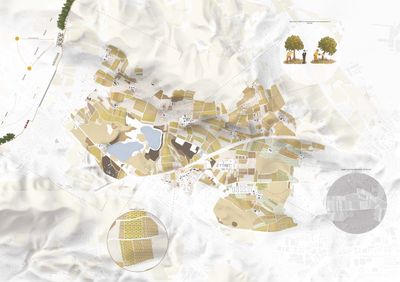
Site Map
- Meadows (45%)
 Grains (27%)
Grains (27%) Corn (11%)
Corn (11%) Oil plants (7%)
Oil plants (7%) Vegetables (4.8%)
Vegetables (4.8%) Potatoes (2%)
Potatoes (2%) Fruits (1%)
Fruits (1%) Vines (0.6%)
Vines (0.6%) Others (1.6%)
Others (1.6%)- Unrestricted Crop Rotation 1st Quality
- Unrestricted Crop Rotation 2nd Quality
- Cereal-Emphasized Crop Rotation 1st Quality
- Cereal-Emphasized Crop Rotation 2nd Quality
- Fodder-Centric Crop Rotation
- Fodder Preferred, Arable farming restricted
- Good Meadow and Pasture Land
- Meadowland
- Extensive Meadow and Pastureland
- Scattred Land
- Forest
- Water
- Buildings
- Agriculture Buildings
 Organic
Organic Fruit trees logged since 1946
Fruit trees logged since 1946
Our site is blessed with a good amount of very fertile soil. It is really a pity to then see that most of that land is used for the alimentation of cows. The potential of the slopes and the sun should be better used which means more orchards, corn fields and vineyards on slopes, and a greater number of vegetable fields in the plains. A variety of diverse agricultural concepts can be introduced or re-introduced, where, just as an example, cattle is allowed to graze under fruit trees and hence, a mixture between different usages can occur.
In summary, the agricultural journey from post-WWII to the present reveals shifts in land use, mechanization’s impact, and challenges of intensification. Current practices raise concerns about monocultures, loss of biodiversity, and environmental threats. However, emerging trends in organic farming and innovative concepts like the Landscape Garden offer hope for sustainable and diversified agriculture in Switzerland.
